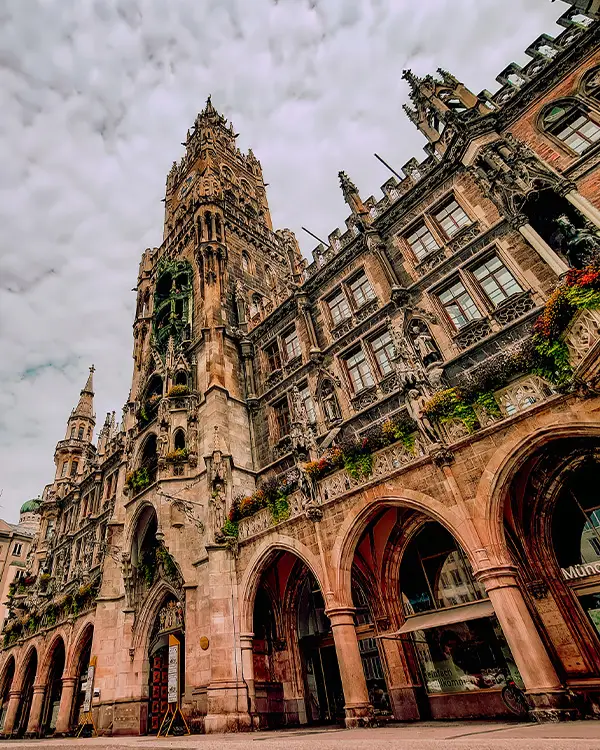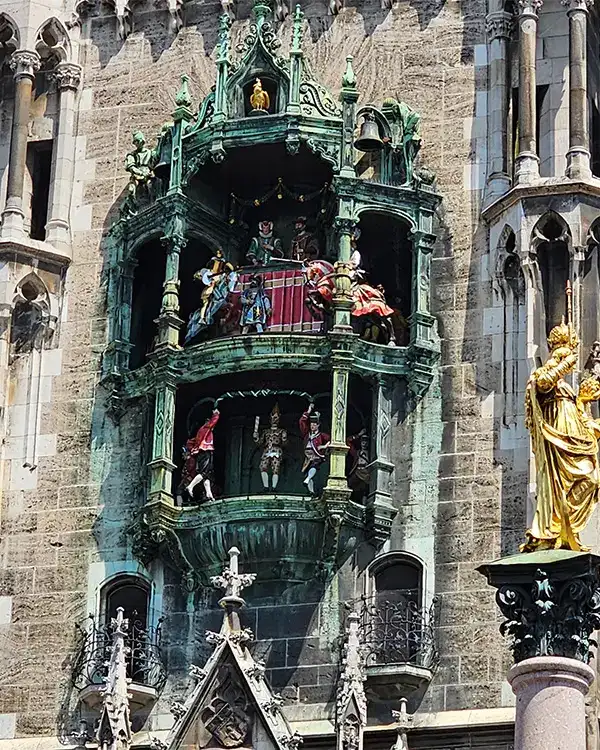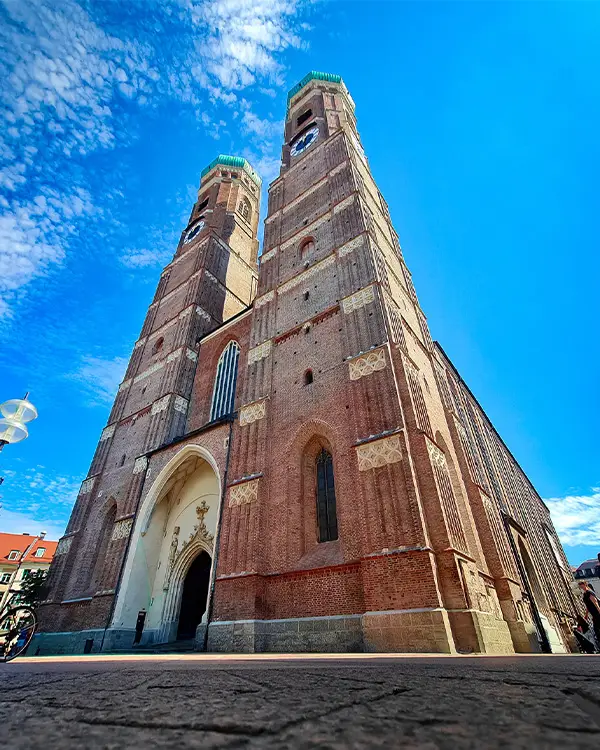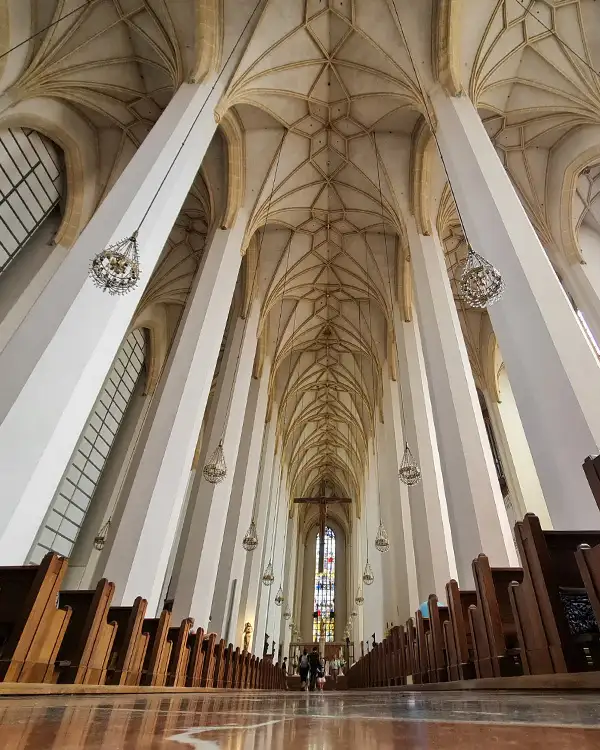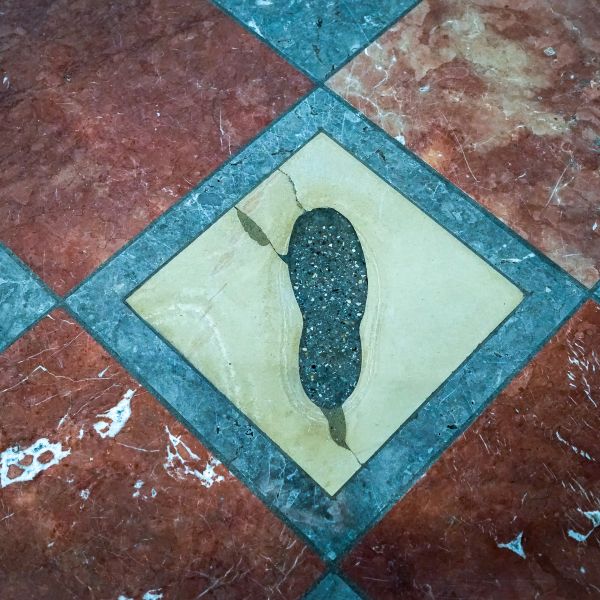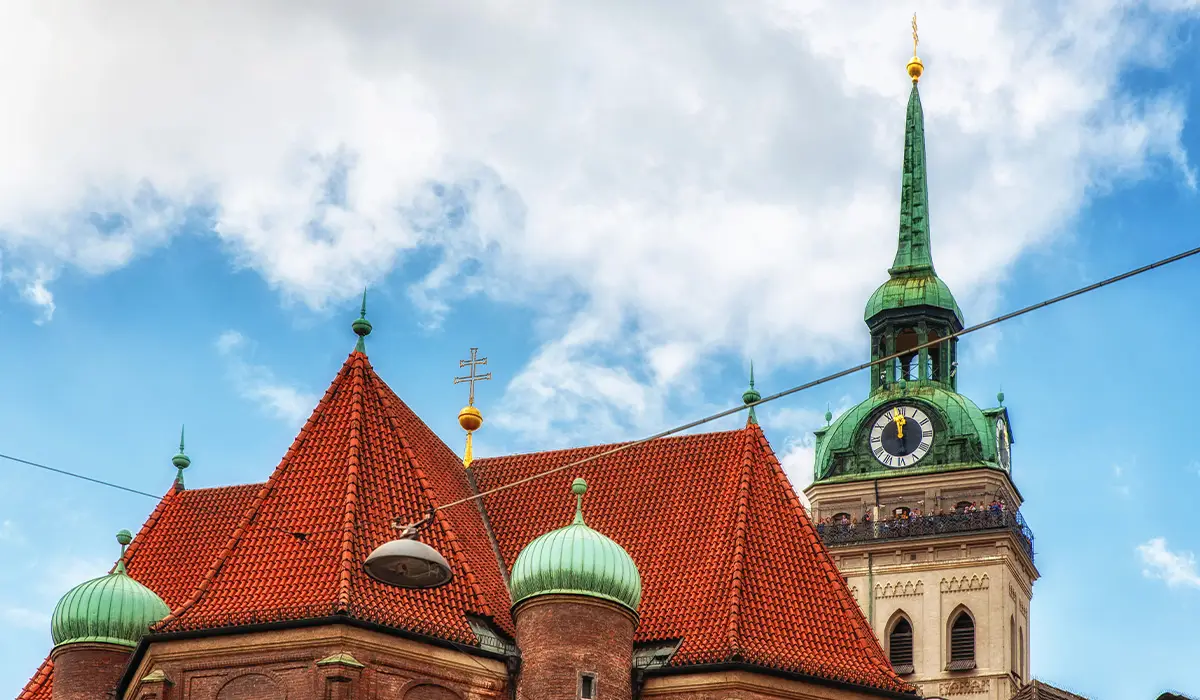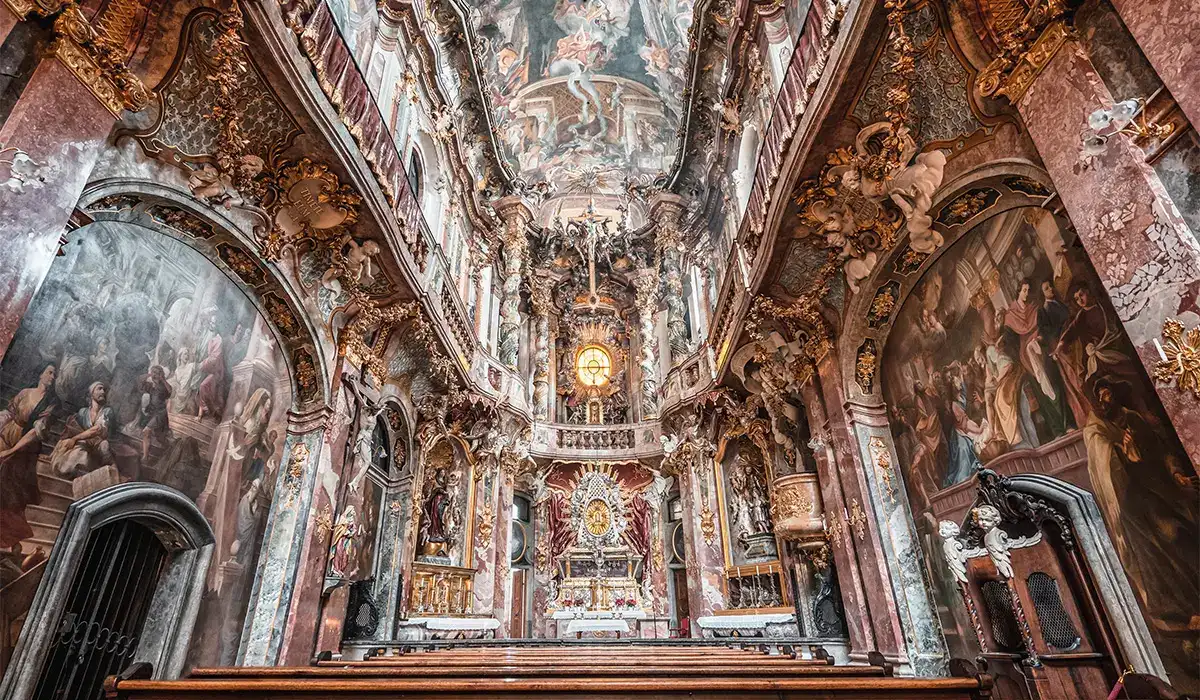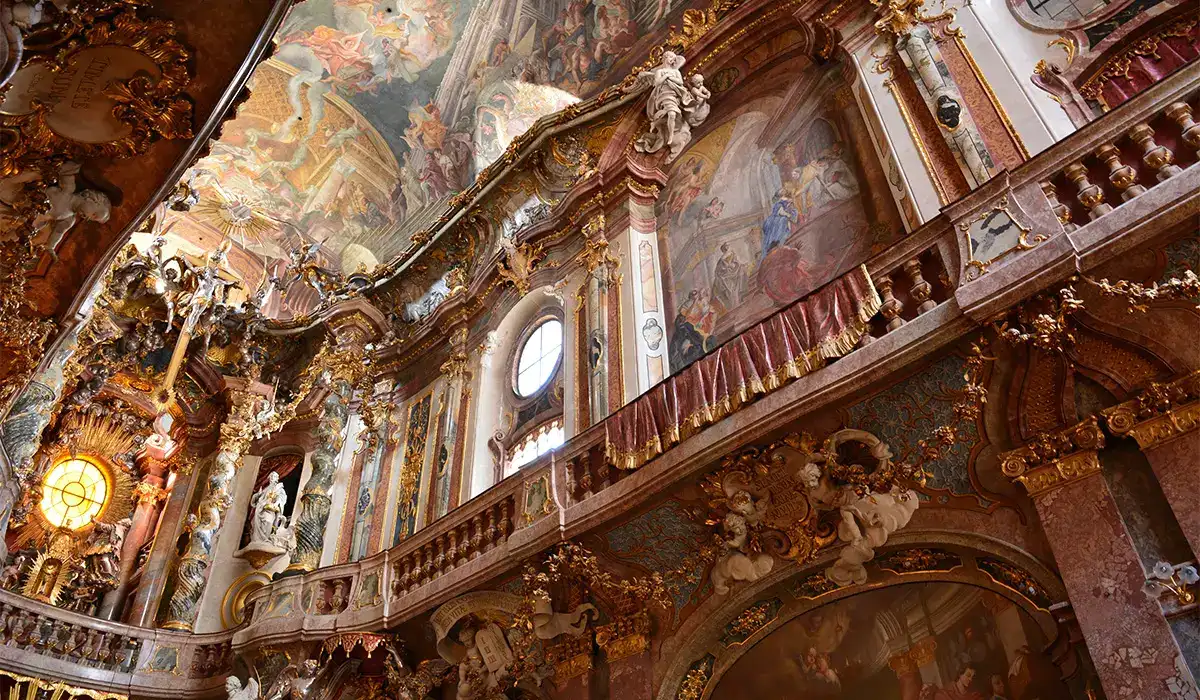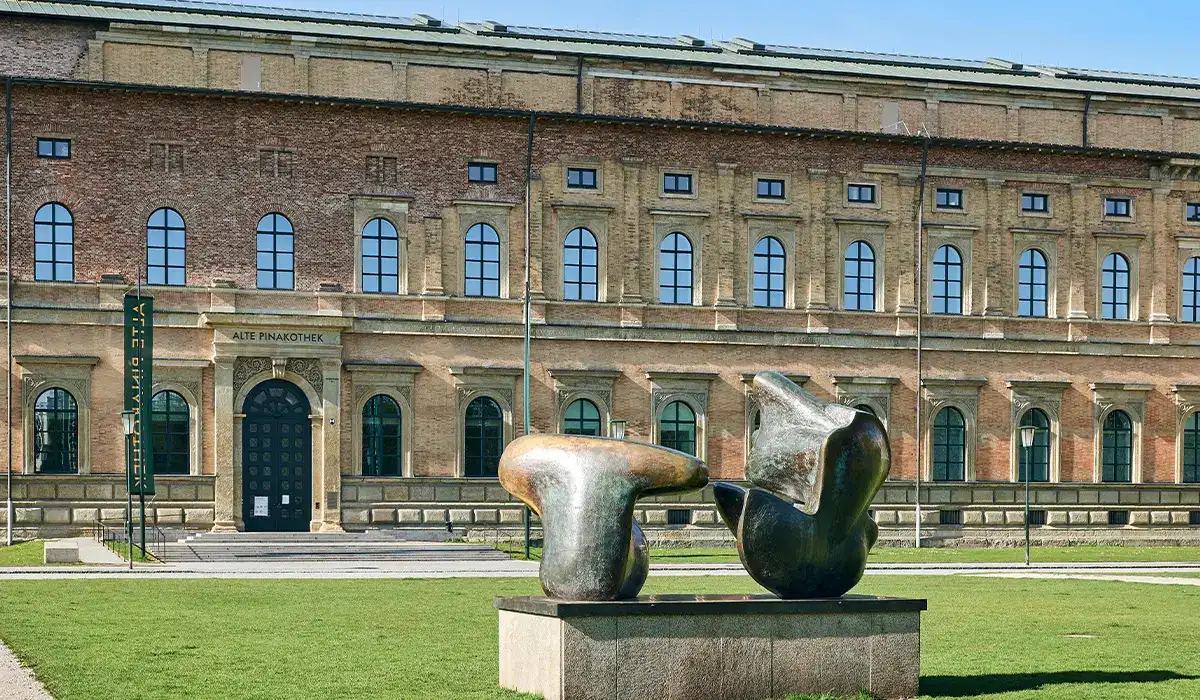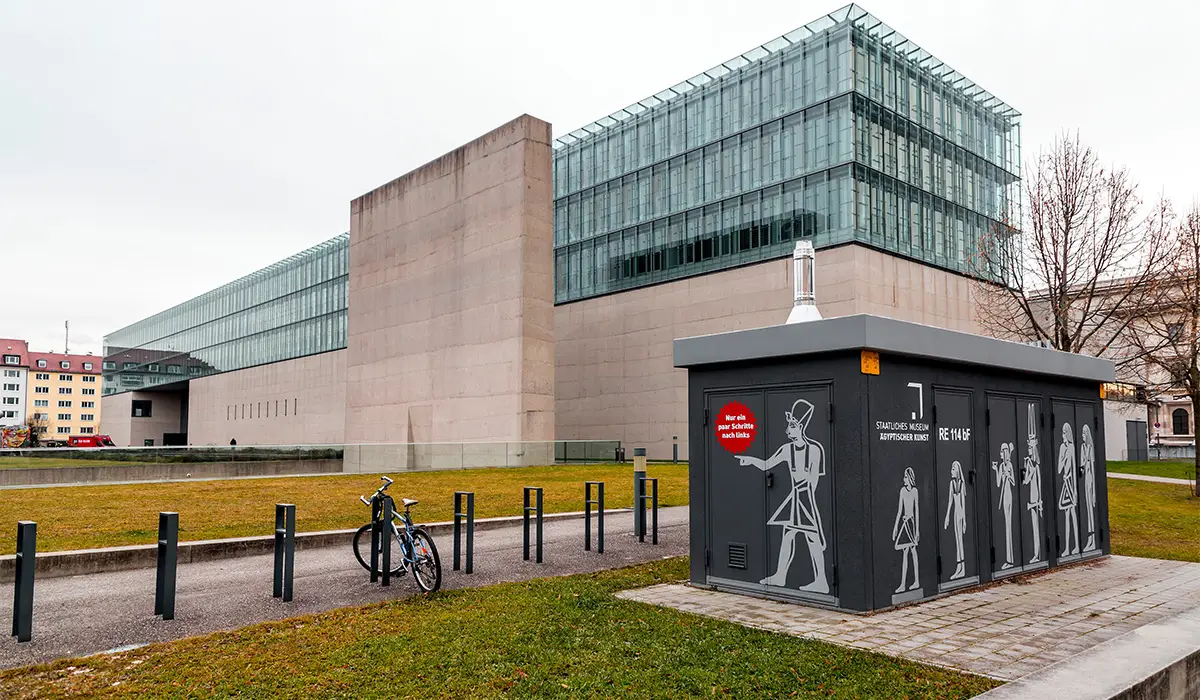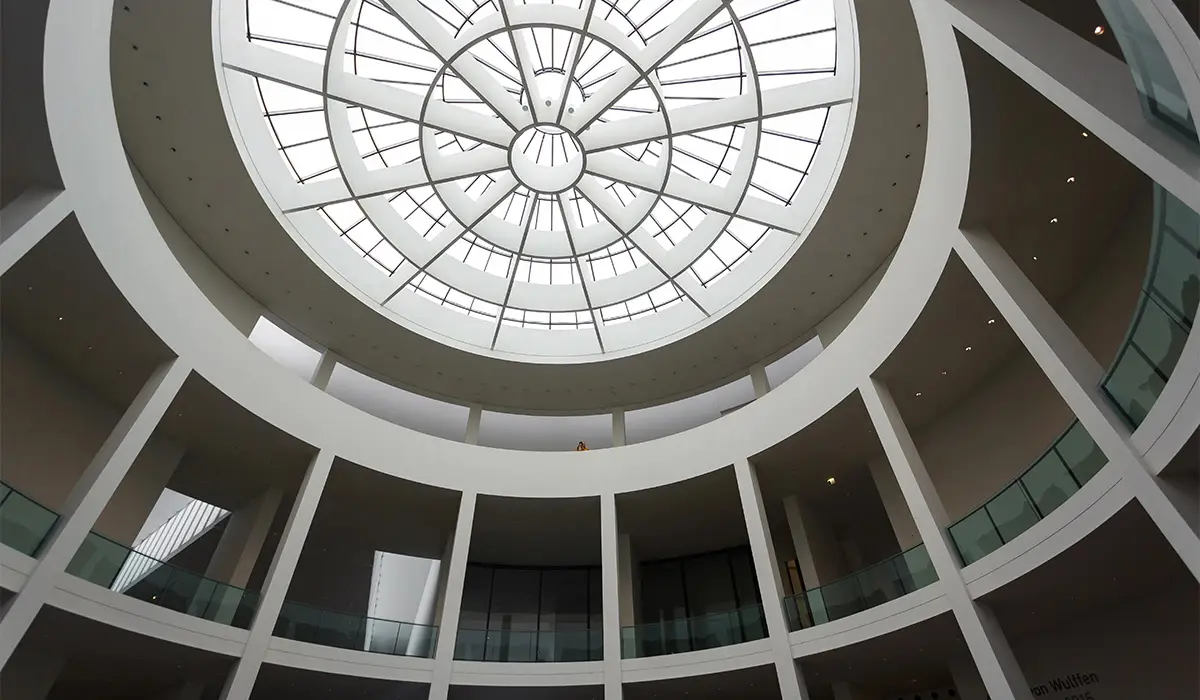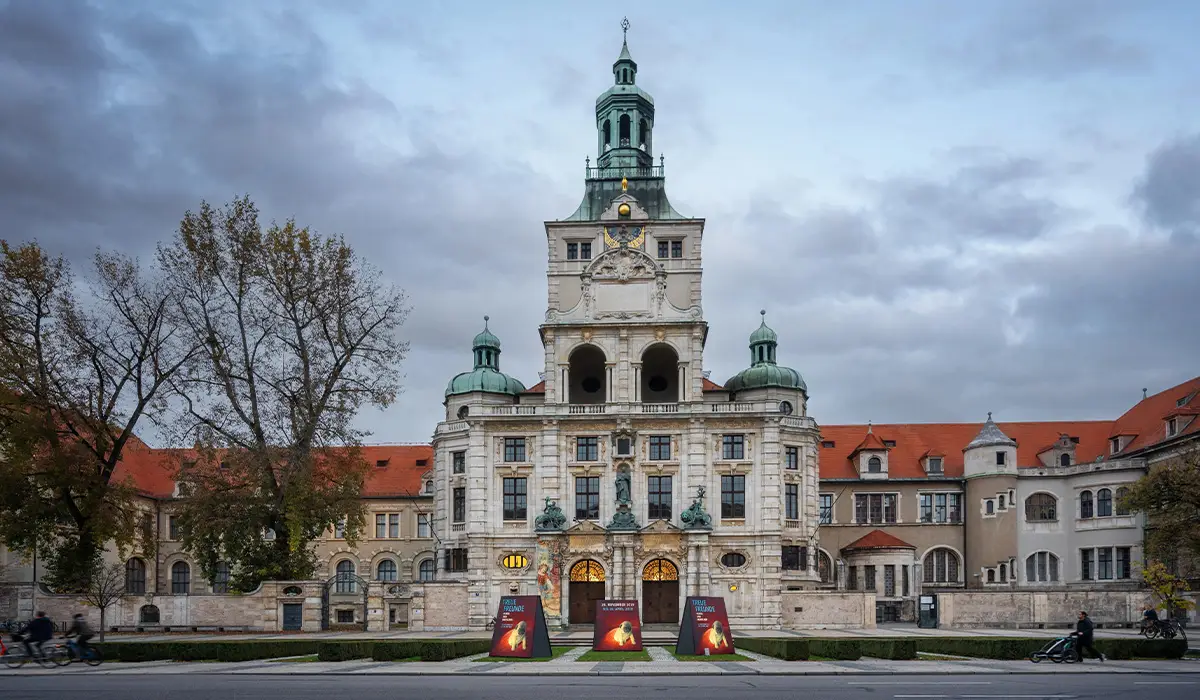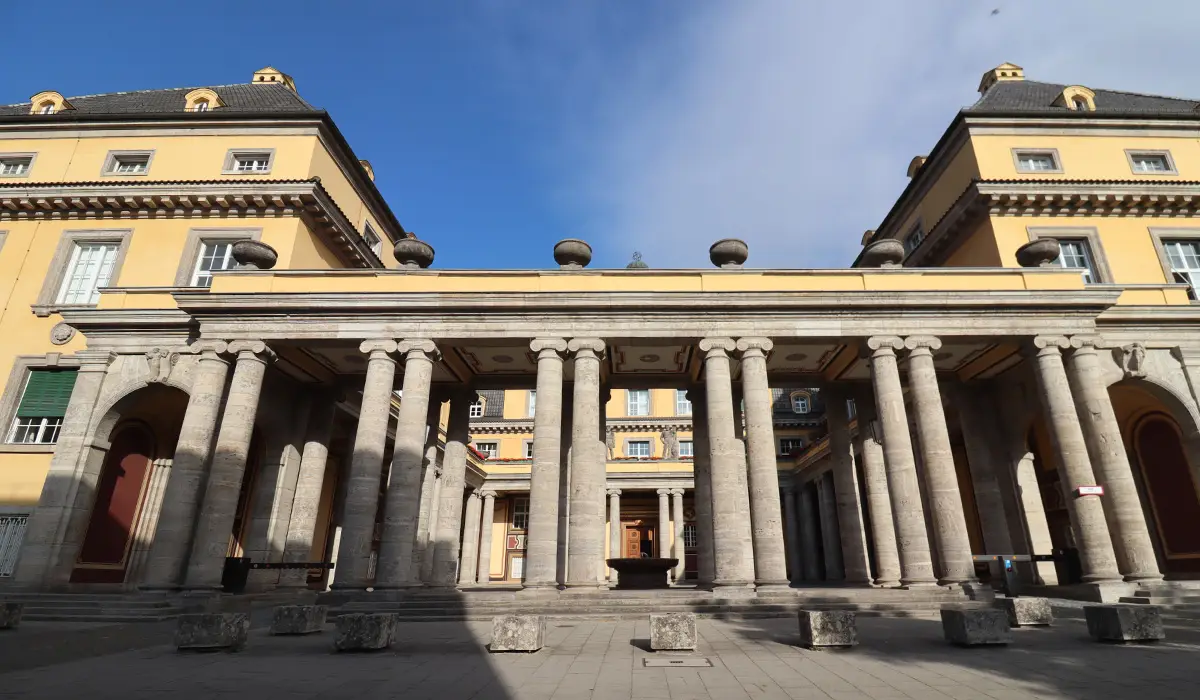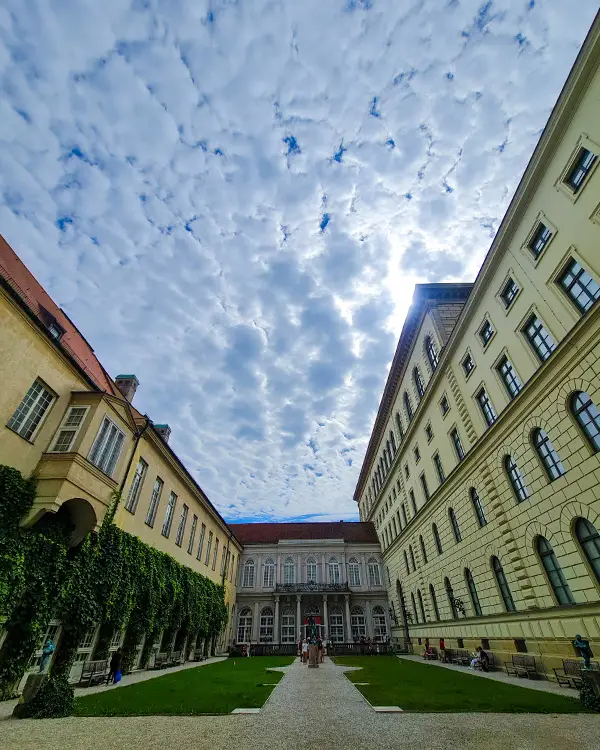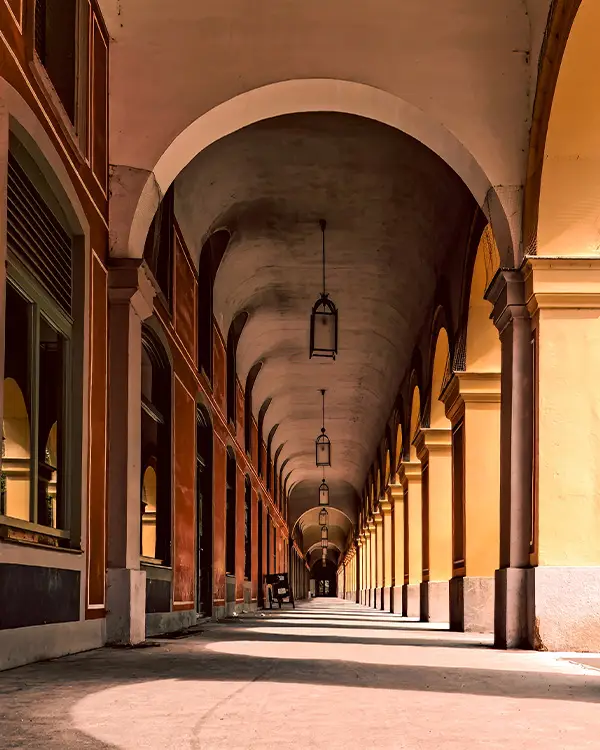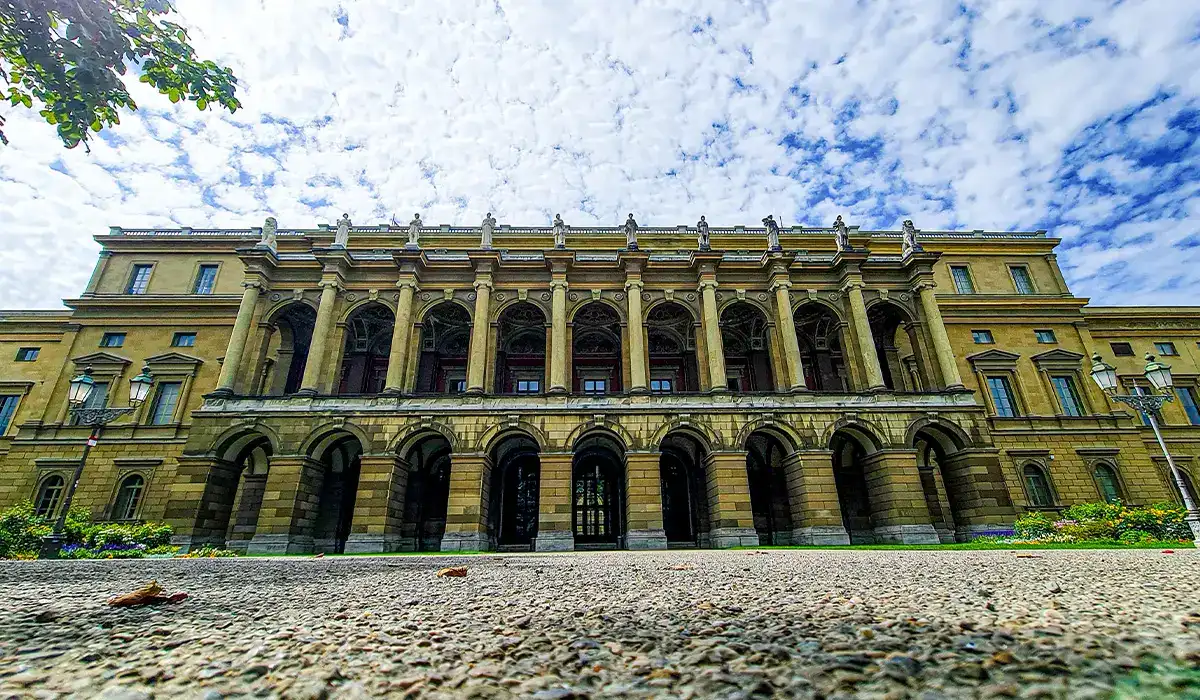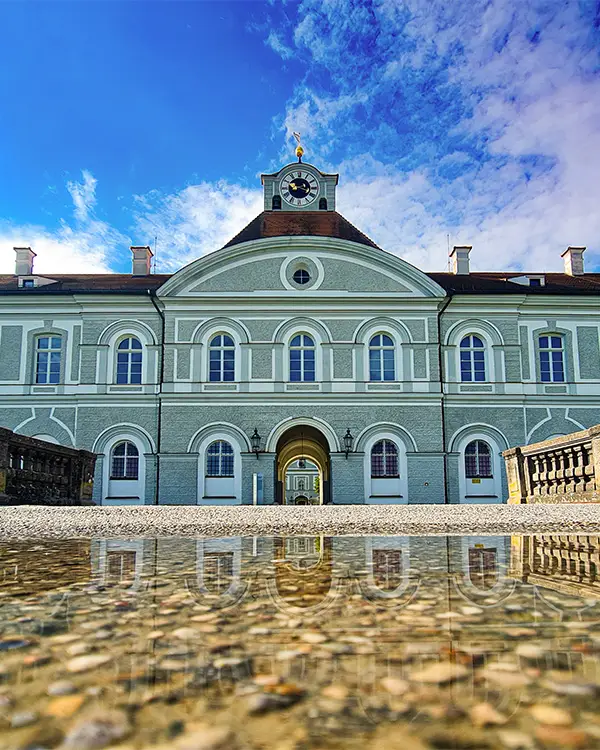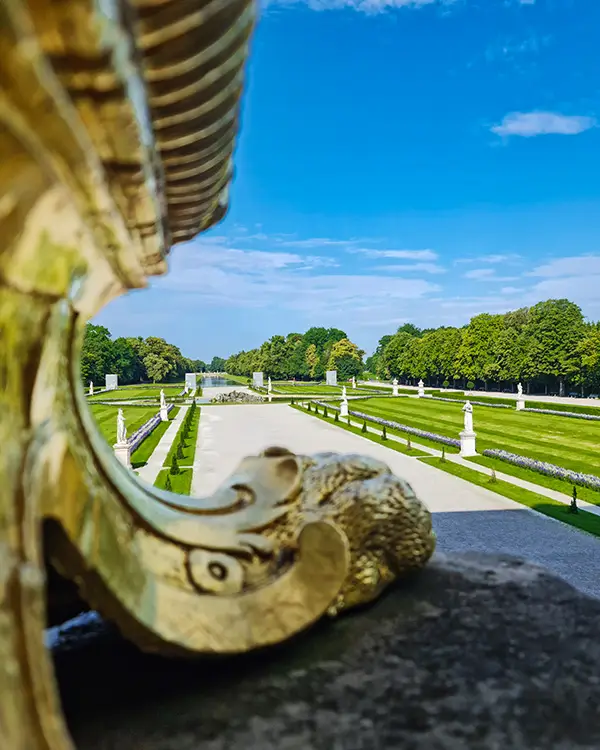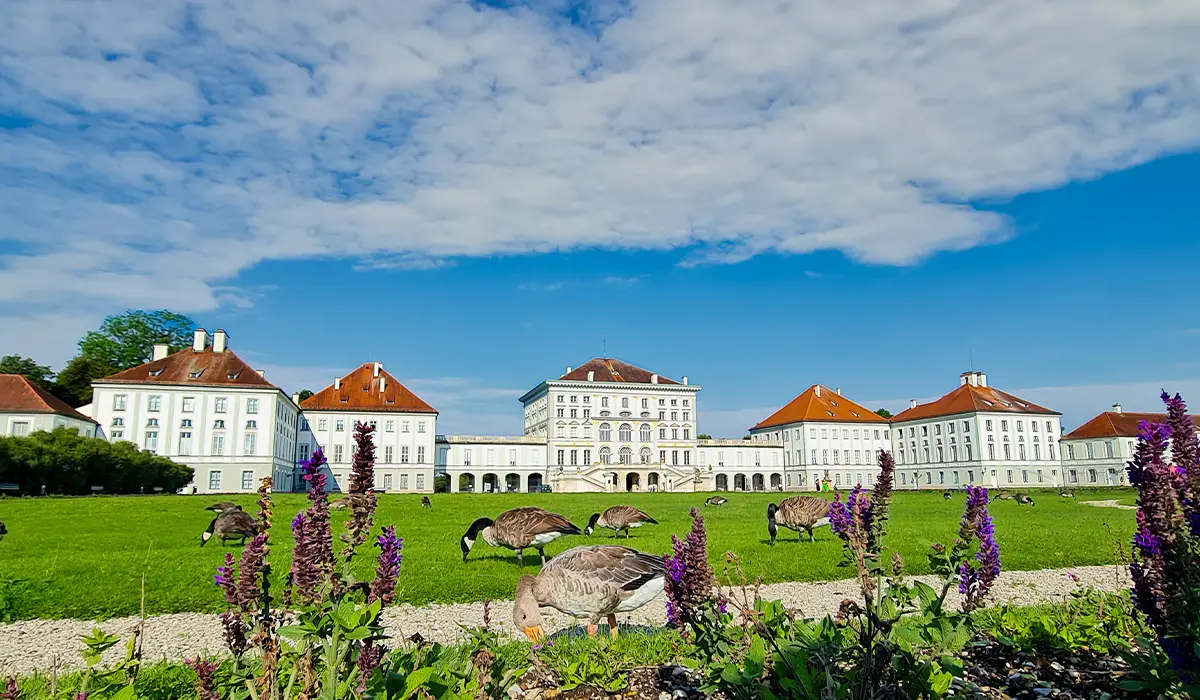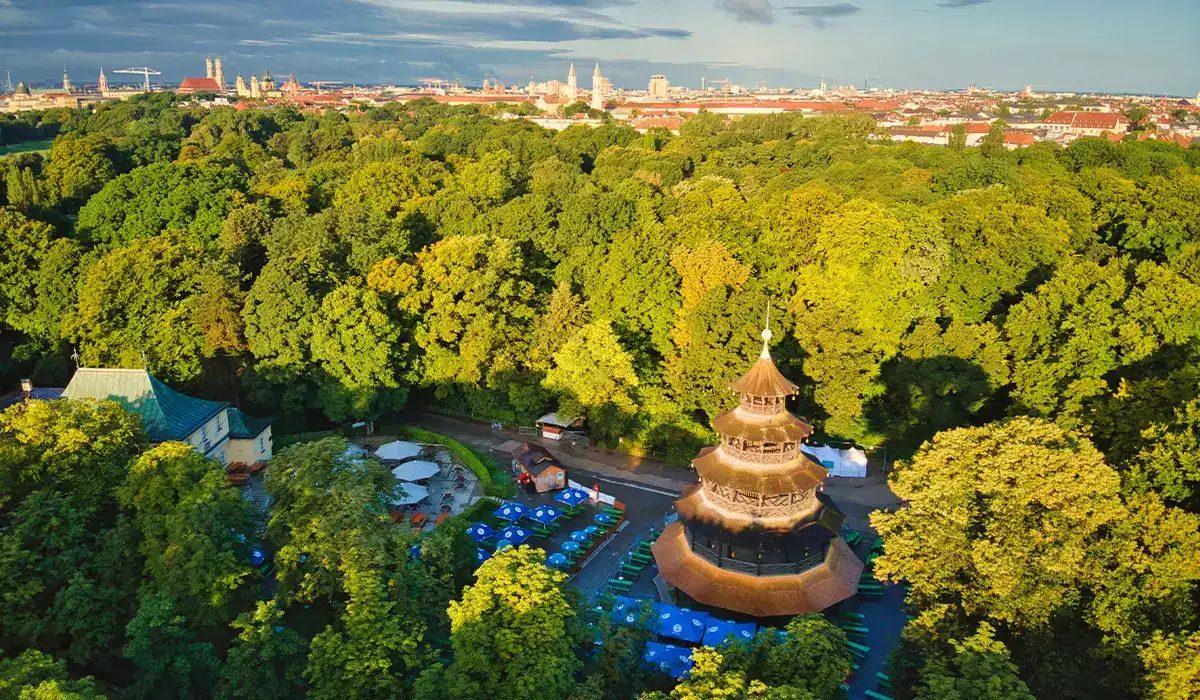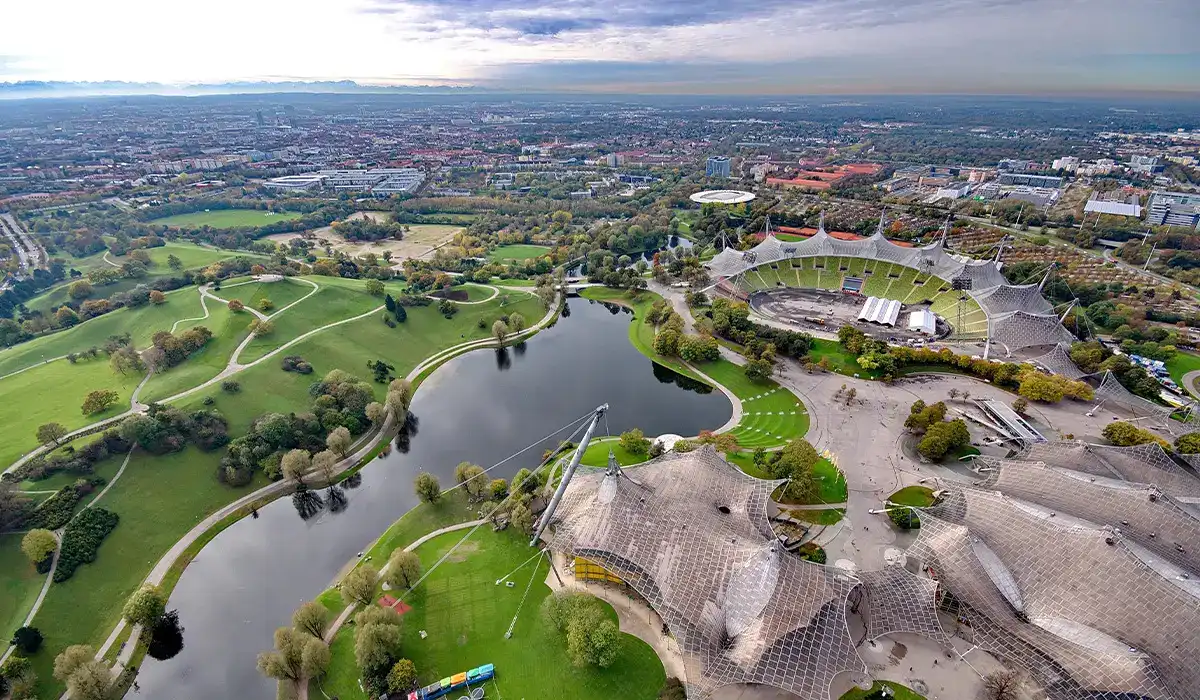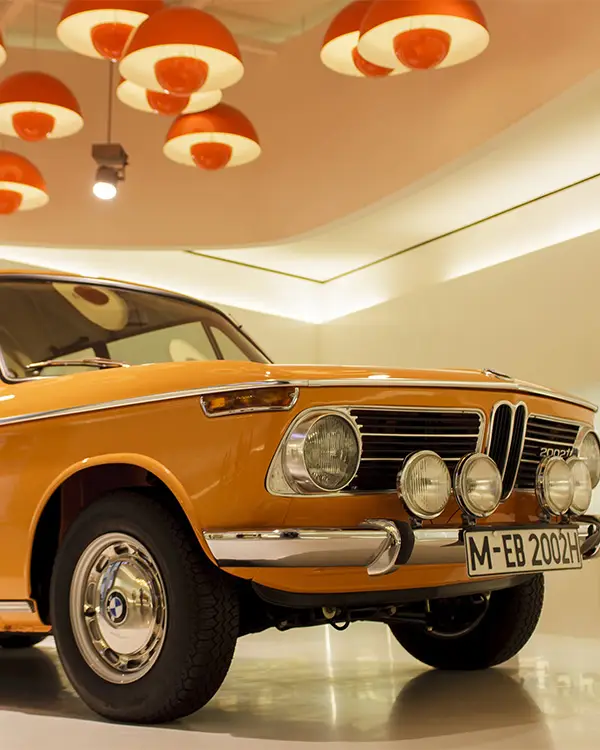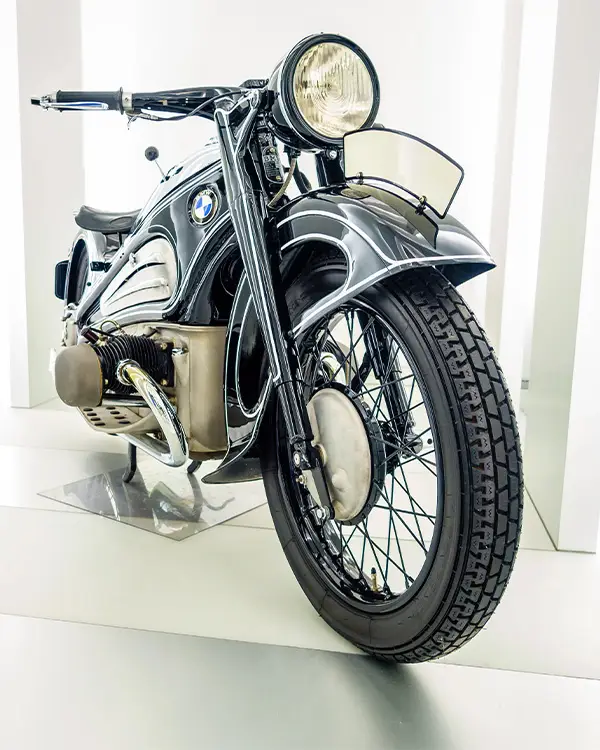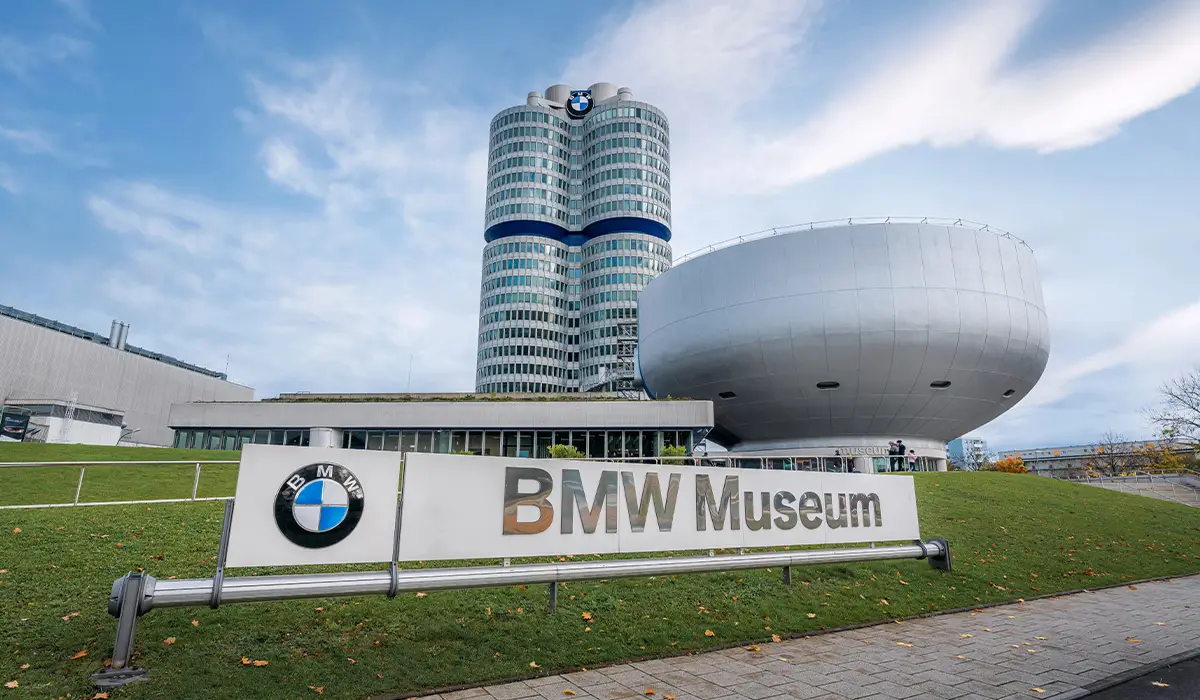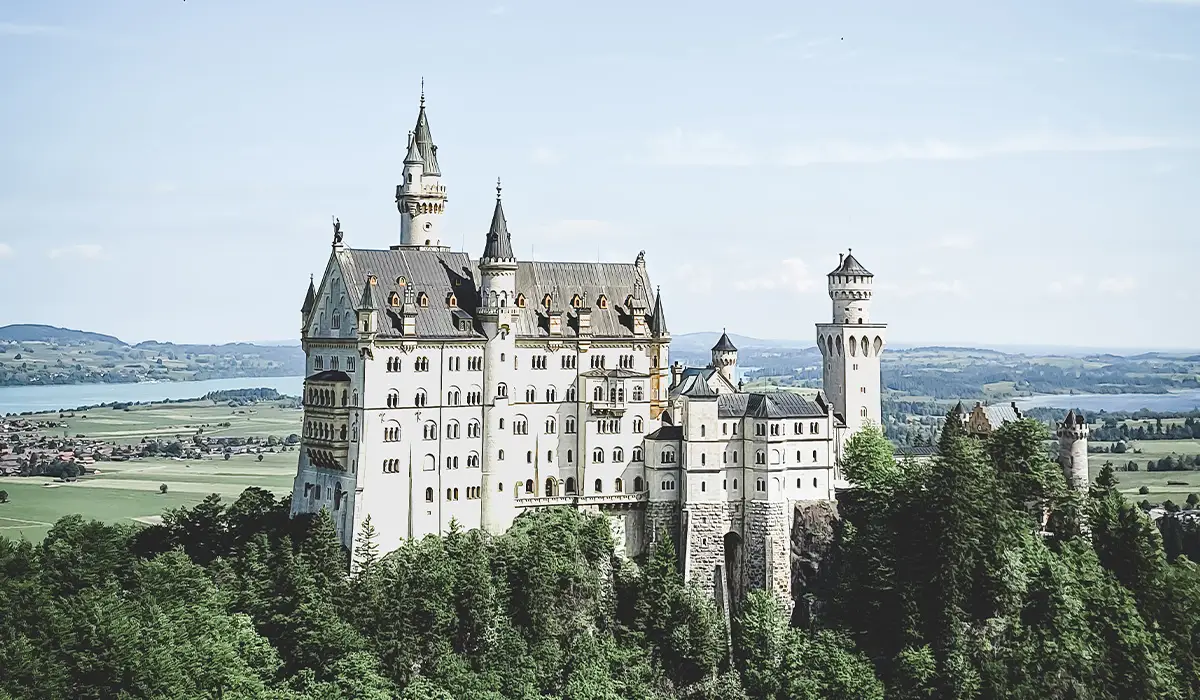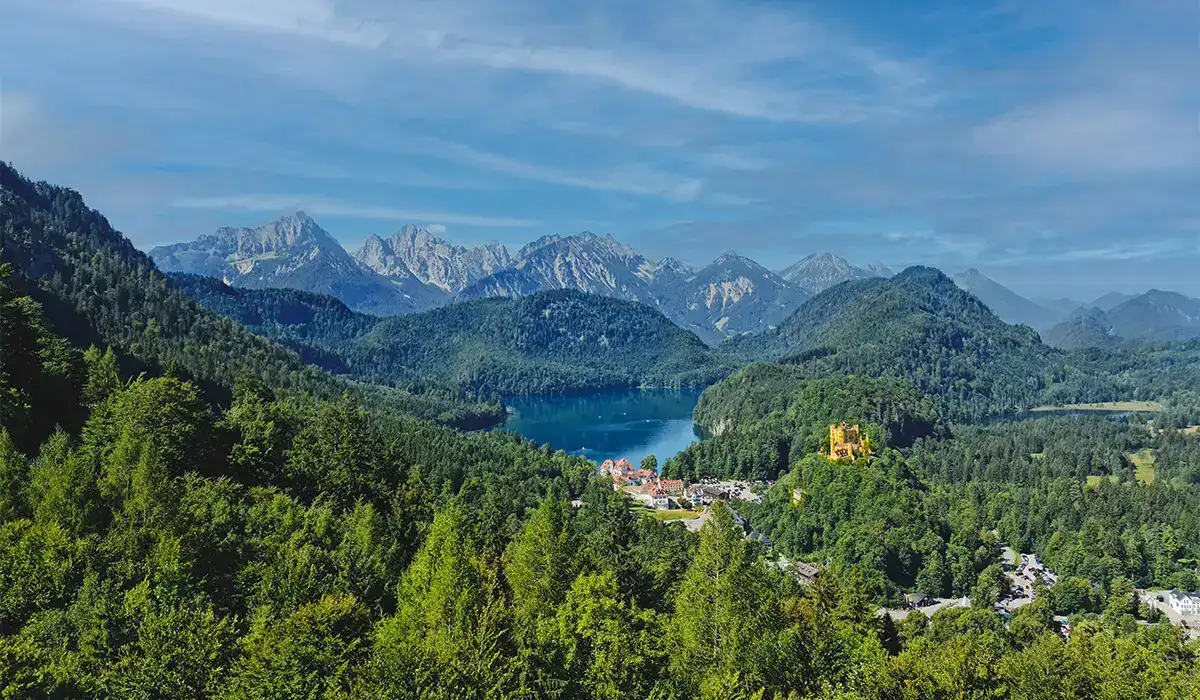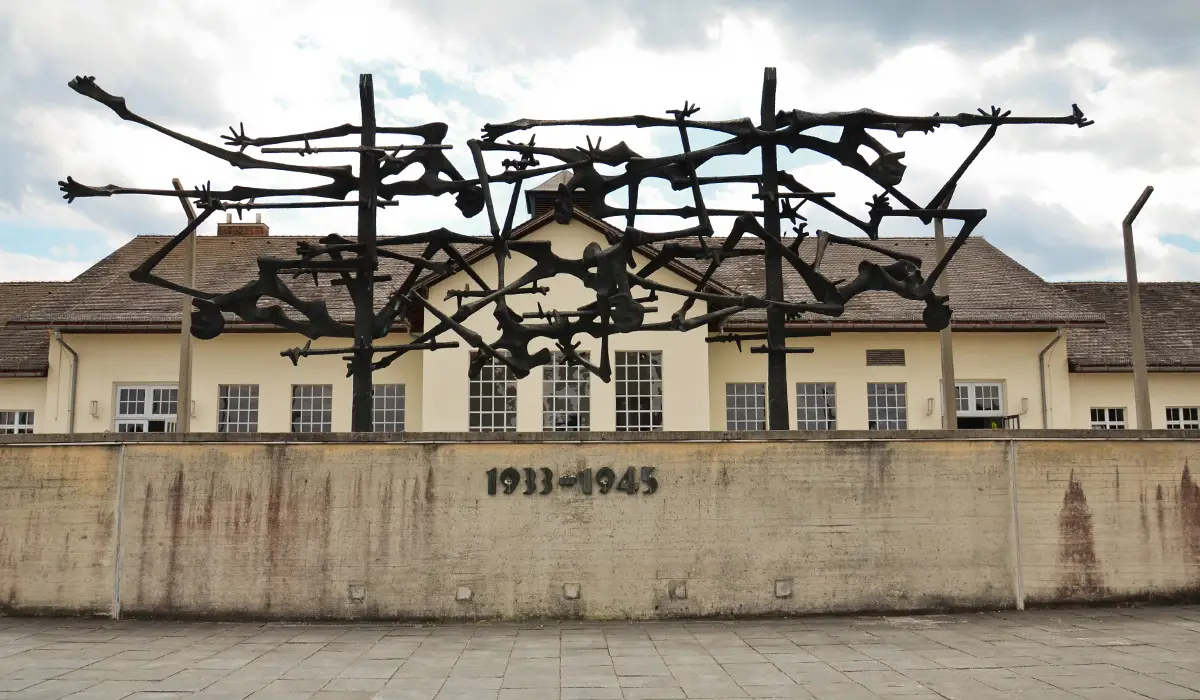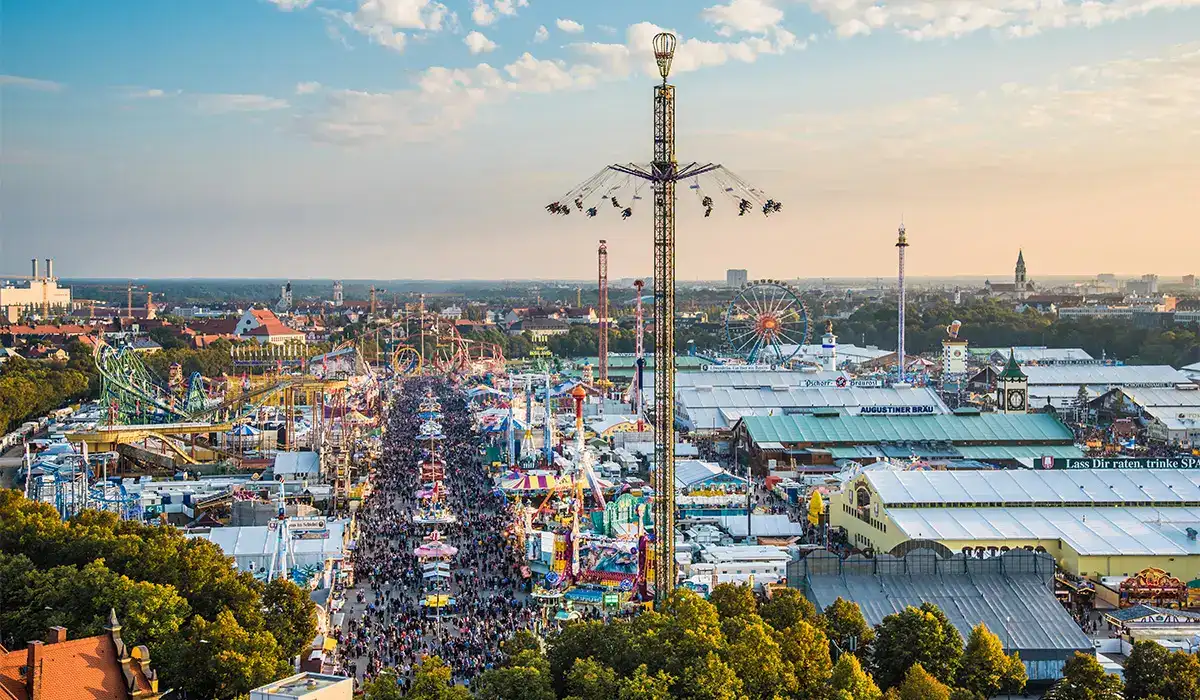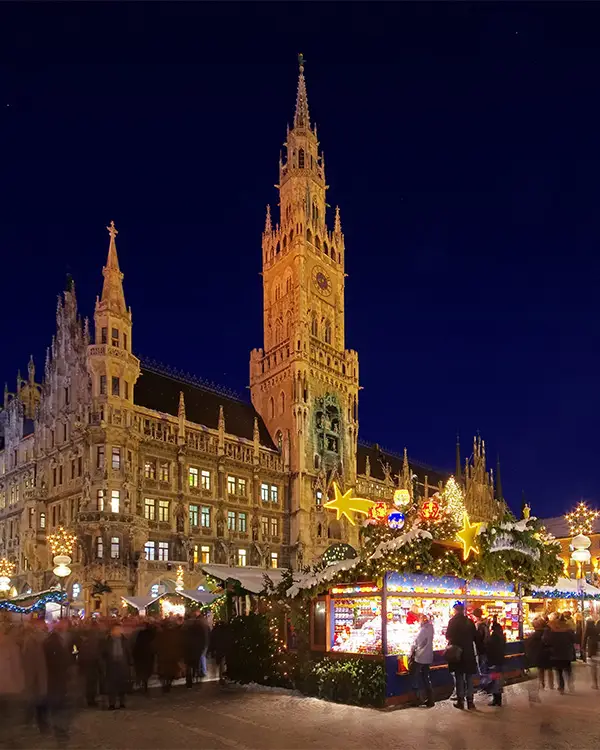Warm up this winter with Oma's newest cookbooks - available on Amazon >>
Best 15 Things to Do in Munich: Top Attractions, Beer Gardens, and Day Trips
By: Eran Fulson | Last Updated: September 22, 2025
If you’re heading to Munich, you won’t run out of things to do. Yes, it’s the city of Oktoberfest and the gateway to the Bavarian Alps, but Munich is much more than beer tents and mountain day trips. This guide covers 15 must-see highlights, seasonal events, and even quick escapes beyond the city.
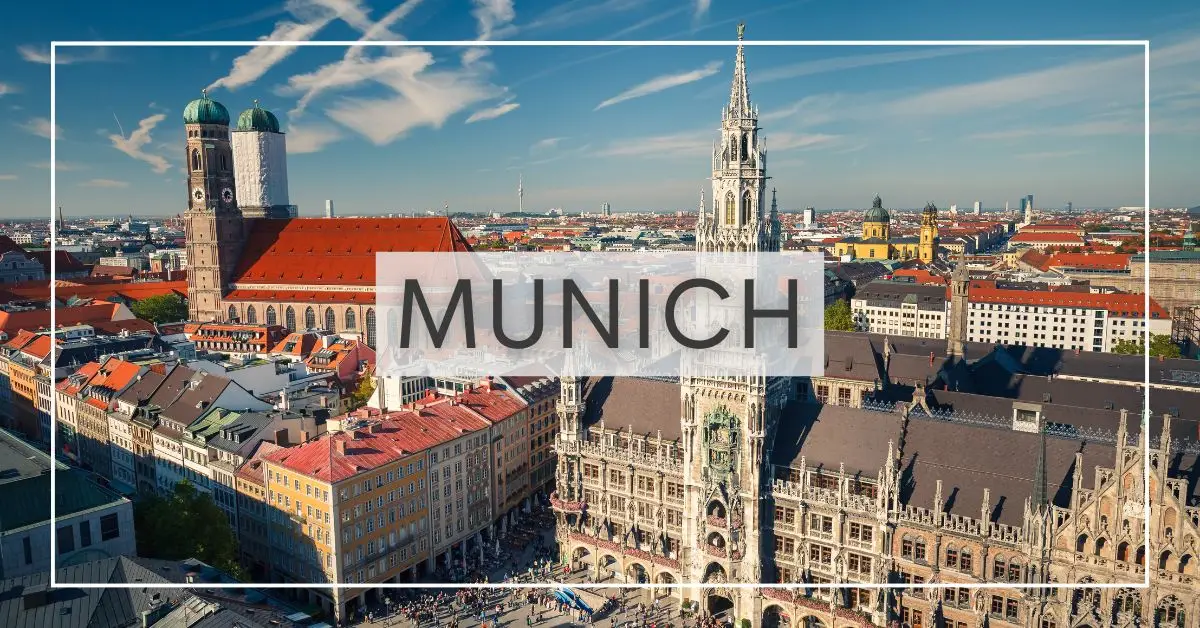
On this page:
Munich in Brief: From Monks to Modern Bavaria
Essentials
- Founded: 700s (monks settled near the Isar River)
- Capital of Bavaria: since 1506
- WWII damage: about half the city was destroyed, then painstakingly rebuilt
Background
Munich started with a group of monks who thought the water from the local Isar River tasted good enough to stay. Hardly a glamorous origin story, but that’s why it’s called “München” > Monk’s Place. By the 1500s, it had muscled Regensburg out of the way and taken over as Bavaria’s capital.
Fast-forward through wars, fire, and Allied bombings, and Munich now looks older than it actually is. All thanks to a post-war rebuild that was more about restoration than reinvention. Germans don’t half-bake their history.
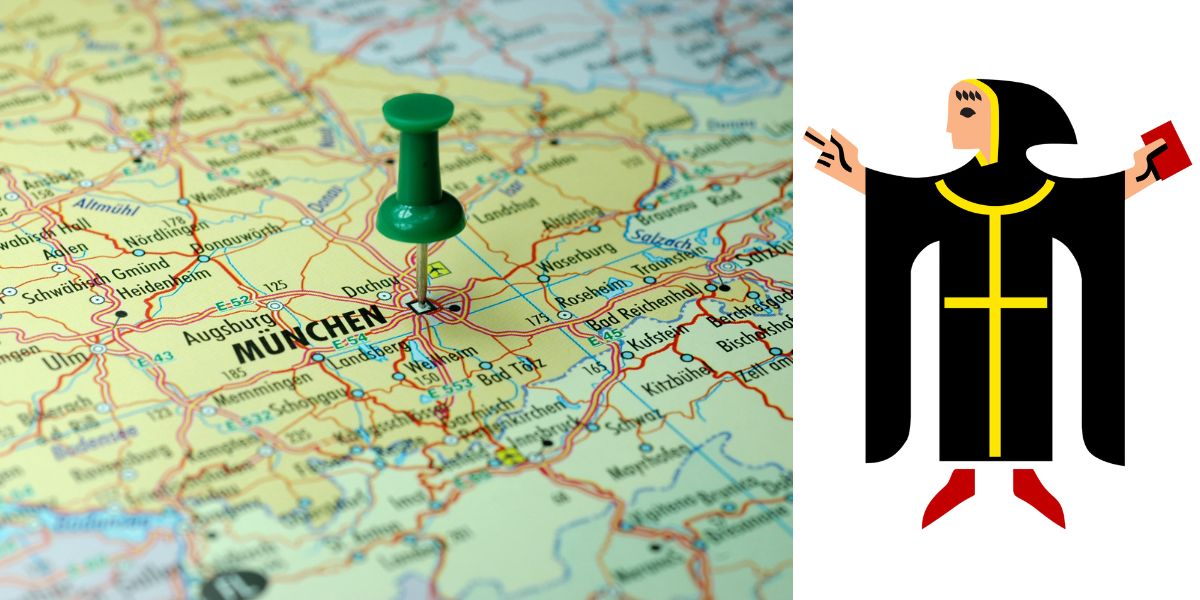 Munich's coat of arms features a homage to its founding monks.
Munich's coat of arms features a homage to its founding monks.Top Sights in Munich’s Old Town (Altstadt)
Marienplatz & Neues Rathaus (New Town Hall)
Essentials
- Nearest station: Marienplatz
- Time needed: 30–60 min
- Best time: Glockenspiel shows at 11:00, 12:00 (also 17:00 in summer)
My Take
Marienplatz is the square you’ll trip over no matter where you’re headed. The New Town Hall looms in Neo-Gothic stone, and the Glockenspiel puts on its little figurine show twice a day. Crowds gather, cameras click, it’s charming the first time.
After that, find a café table and watch everyone else stare up slack-jawed. It's not all history in this legendary square; FC Bayern celebrates its championship wins from this balcony, and the square turns into one massive beer-fueled street party.
Frauenkirche (Cathedral of Our Lady)
Essentials
- Nearest station: Marienplatz
- Time needed: 45 min
- Best time: Morning for fewer crowds, late afternoon for city views
My Take
Those twin green domes pop up in almost every Munich skyline shot, partly because no building is allowed to out-tower them. The climb is mercifully short: 89 steps and then an elevator.
Look for the “Devil’s Footprint.” Legend says he stomped in anger, thinking the church had no windows, but turns out they were just hidden by the columns. A classic Gothic construction prank. Munich has a knack for mixing the holy with a wink.
Read More: Frauenkirche Munich »
St. Peter’s Church (Alter Peter)
Essentials
- Nearest station: Marienplatz
- Time needed: 45 min
- Best time: 1 hr before sunset for golden hour skyline shots
My Take
Climbing 300 steps up Alter Peter gets you the best view of Marienplatz, the red roofs, the Rathaus, and even the Alps on a clear day. Bring coins for the turnstile at the top.
Built in the 12th century, this is Munich’s oldest parish church. Its bells are even older. Munich’s skyline isn’t jagged with skyscrapers, so the view is all spires, domes, and rooftops. Old-world in the best way.
Asamkirche (Church of St. Johann Nepomuk)
Essentials
- Nearest station: Sendlinger Tor
- Time needed: 20–30 min
- Best time: Mid-morning for best interior light
My Take
This is Munich’s smallest church, but probably its most over-the-top. The Asam brothers built it in the 1700s as their personal “look what we can do” project. And they went all in: gold, frescoes, sculptures crammed into every square inch. It feels less like a church and more like the Baroque period flexing.
You won’t need long here, but it’s worth stepping inside if only to remind yourself that minimalism wasn’t always in style.
See More: Hidden Gems in Munich »
Museums & Culture in Maxvorstadt
Pinakothek Museums
Essentials
- Nearest station: Königsplatz
- Time needed: 2–4 hrs, or more if you really love art
- Best time: Weekday mornings
My Take
Munich bundles its art into three museums: Alte, Neue, and Moderne. Between them, you can trace European painting from the 14th century to whatever counts as “art” this year.
Alte is Raphael and Dürer territory. Neue is where Van Gogh sulks and Cezanne brightens things up. Moderne? Expect architecture models and conceptual pieces that make you say “Ah yes” while secretly wondering what you’re looking at.
If you only pick one, the Alte Pinakothek gives you the classics.
Bayerisches Nationalmuseum
Essentials
- Nearest station: Lehel
- Time needed: 1.5–2 hrs
- Best time: Late afternoons
My Take
This place feels like Bavaria showing off. Goldsmithing, ivory carvings, and religious sculptures. If it sparkled, they collected it. Even if you’re not into museums, the building itself is worth a wander.
It looks like someone rolled Gothic, Baroque, and Renaissance architecture into one. A Frankenstein of styles, but somehow it works.
Bavarian State Opera (Nationaltheater)
Essentials
- Nearest stations: Marienplatz / Odeonsplatz
- Time needed: 3–4 hrs for a performance
- Best time: Evenings; arrive 20 min early
My Take
The Nationaltheater has been burned down twice (fire in 1825, bombs in WWII), rebuilt twice, and still manages to be one of the grandest opera houses in Europe. The stage is massive, spreading out over 26,000 square feet. Which, you'd think the performers might get lost on it.
For people who worry about dress codes, don’t. Munich isn’t Vienna. A blazer or smart dress is fine.
Royal Palaces & Grand Gardens
Munich Residenz
Essentials
- Nearest station: Odeonsplatz
- Time needed: 2–3 hrs
- Best time: Rainy days as it's mostly indoors
My Take
Germany’s largest city palace makes my first two-bedroom apartment look like a broom closet. Ten courtyards, 130 rooms, and centuries of Wittelsbach family wealth on display. You’ll wander from Renaissance to Rococo to Neoclassical without realizing you’ve walked a mile.
The Herkulessaal still hosts concerts, which feels like the one time “palace acoustics” is a compliment. If you want to see how Bavarian royals lived, this is the blueprint.
Nymphenburg Palace
Essentials
- Nearest station: Tram 17 to Schloss Nymphenburg
- Time needed: Half day
- Best time: Spring-summer for gardens; early autumn for fewer crowds
My Take
Most people hand out cigars when a baby’s born. The Bavarians? They built Nymphenburg Palace. Constructed to celebrate the birth of Max Emanuel, it sprawls across 444 acres of gardens. The palace itself is a mash-up of Baroque, Rococo, and Neoclassical styles (architectural ADHD was big back then).
Parts of the grounds even doubled as an equestrian venue for the 1972 Olympics. If you’re into palaces, this is Munich’s most photogenic. If you’re not, the gardens alone are worth it.
Explore: Nymphenburg Palace »
Parks, Beer Gardens & Local Life
Englischer Garten
Essentials
- Nearest stations: Universität / Lehel
- Time needed: 2–3 hrs
- Best time: Late afternoon, when locals actually start using it
My Take
The Englischer Garten is bigger than Central Park, and somehow more eccentric. One corner has a Greek-style temple (the Monopteros), another has a beer garden under a Chinese pagoda, and smack in the middle? A wave where surfers ride the river.
The Eisbach isn’t for beginners (even locals get tossed around), but it’s great fun to watch. Fun fact: it was American soldiers who fiddled with the current to create it. Which means Munich owes its surf scene to homesick American GIs. Grab a Maß at the Chinese Tower beer garden (7,500 seats, and still not Munich’s largest) and call it a day well spent.
Discover: Diana Temple in the English Garden »
Olympiapark & BMW Welt
Essentials
- Nearest station: Olympiazentrum
- Time needed: 2–4 hrs (combine both)
- Best time: Evenings for sunsets; weekdays for BMW exhibits
My Take
Olympiapark was built for the 1972 Games, but unlike some Olympic venues, it didn’t turn into a white elephant. Locals now live in the old athletes’ village, the stadium doubles as a concert venue, and if you’re brave enough, you can clip into a harness, walk the tented roof, and/or zipline across the field. Just don’t look down too much.
Next door, BMW Welt is basically a car showroom on steroids. Even if you don’t care about cars, there’s something entertaining about watching adults geek out over a steering wheel like it’s a rare gemstone. For a safe thrill ride, you can drive the simulators.
Read: Museums in Germany (BMW section) »
DId you know?
The letters 'BMW' stand for Bayerische Motoren Werke (Bavarian Motor Works).
Day Trips from Munich
Neuschwanstein Castle
Essentials
- Getting there: Train to Füssen + shuttle bus; or day tour
- Time needed: Full day
- Best time: Shoulder season (May/Sept) for fewer crowds; tickets must be booked ahead
My Take
Disney may have copied it, but King Ludwig II built Neuschwanstein first. Depending on who you ask, he was either a dreamer or completely unhinged. The castle looks like it belongs on a movie set, which is partly why 6,000 people line up daily in summer.
Pro tip: take the horse carriage up unless you want a workout. Combine it with nearby Hohenschwangau (Ludwig’s parents’ place) and you’ve got a full royal soap opera in one day.
See More: Castles in Bavaria »
Dachau Concentration Camp Memorial
Essentials
- Getting there: S2 to Dachau + Bus 726
- Time needed: 3–4 hrs
- Best time: Mornings for space to reflect
My Take
Dachau was the first Nazi concentration camp, opened in 1933. It became the model for the rest. Over 200,000 people were imprisoned here; 41,000 never left. Visiting isn’t easy, and it shouldn’t be.
The exhibits are sobering, the atmosphere heavy. You’ll leave quieter than you arrived. If Munich shows Bavaria’s joy, Dachau is the reminder of what can’t be forgotten.
Seasonal Highlights
Oktoberfest Munich (Wiesn): 2025 Guide
Essentials
- Dates: 20 Sept – 5 Oct 2025
- Nearest station: Theresienwiese (U4/U5)
- Best time: Weekdays before 15:00; families → Oide Wiesn
My Take
Sixteen days of beer, bratwurst, and chaos. The Maß (one-liter mug) is the only serving size, so pace yourself. Each tent has its own theme with brass bands, roast chicken, even crossbows.
If Theresienwiese station looks like a rugby scrum, hop off one stop later at Schwanthalerhöhe and walk back. Don’t wear white shoes, and if it gets too much, sneak off to the Hirschgarten or Chinese Tower for a calmer version of Bavarian drinking culture.
Read More: Best Oktoberfest in Germany »
Munich Christmas Markets
Essentials
- Dates: Late Nov – 24 Dec
- Nearest station: Marienplatz
- Time needed: 1–3 hrs per market
- Best time: Evenings for lights, mornings for easy shopping
My Take
Marienplatz is the classic with its Gothic backdrop, lights, and glühwein. It feels like stepping into the 14th century with Wi-Fi. If crowds aren’t your thing, Viktualienmarkt and the Residenz courtyard offer less hectic options.
Don’t miss the food: roasted almonds, sausages, and enough mulled wine to forget it’s freezing.
Explore: 18 Christmas Markets in Germany »
Map & Practical Tips
- Munich is compact. Most Old Town sights are within walking distance.
- Use the U-Bahn and S-Bahn for faster trips (the Munich Card day pass is good value).
- Base yourself near Marienplatz for central access, or Schwabing for nightlife and the English Garden.
FAQ: Visiting Munich
How many days do you need in Munich?
How many days do you need in Munich?
Three days covers the main sights: Old Town (Altstadt), Residenz, English Garden, and a museum or two. Add a fourth if you want a day trip to Neuschwanstein or Dachau.
Is Munich walkable?
Is Munich walkable?
Yes. Most Old Town sights are within 15 minutes of each other. For palaces, Olympiapark, and day trips, use the U-Bahn or S-Bahn.
Do you need reservations at Oktoberfest?
Do you need reservations at Oktoberfest?
The short answer - no. You can walk into tents during the day, especially on weekdays. However, evenings and weekends are packed. Reserve months in advance if you want guaranteed seating.
What’s the best time to visit Munich?
What’s the best time to visit Munich?
Late spring (May - June) and early autumn (Sept) balance good weather with manageable crowds. December is magical for Christmas markets.
Which is better: Munich Residenz or Nymphenburg Palace?
Which is better: Munich Residenz or Nymphenburg Palace?
Residenz is central and packed with history; Nymphenburg is bigger, greener, and more photogenic. If you have time, do both. If not, pick based on weather: Residenz for rainy days, Nymphenburg for sunny ones.
Is a day trip to Neuschwanstein Castle worth it?
Is a day trip to Neuschwanstein Castle worth it?
Yes, but... if you’re prepared for crowds. The fairytale look is real, but tickets must be booked ahead of time. Pair it with Hohenschwangau Castle to make the experience worthwhile.
Final Word
Munich balances old-world grandeur with everyday Bavarian quirks. One minute you’re in a palace, the next you’re watching surfers in a river. You can drink beer with 7,500 strangers, wander through centuries of art, or take a train to a fairy-tale castle. It’s a city that keeps its history intact while still letting you have fun in the present.

Eran Fulson
Traveler • Writer • Explorer of Historic Streets & Hidden Gems
Eran is a first-generation Canadian with German roots now living in Wales. For over 15 years, he’s traveled across North America and Europe, road-tripping through cities, coastlines, and mountain landscapes. He combines his multicultural background with a keen attention to detail to bring Germany to life for curious travelers. Eran’s writing is rooted in firsthand experience helping you uncover Germany's hidden gems, local traditions, and meaningful cultural experiences beyond the typical tourist trail.


